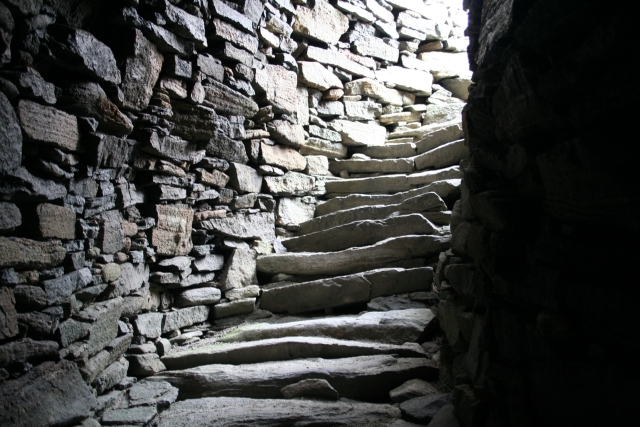An Iron Age home in the Highlands appears to have been hastily abandoned after a fire broke out either accidently or in an attack.
Archaeologists investigating the remains of the broch in Assynt, Sutherland, say they have found evidence to support the theory that the building caught fire and collapsed about 2,000 years ago...
Iron Age house in Assynt 'was burned down'
By Andrew Thomson, BBC Scotland
29 August 2017
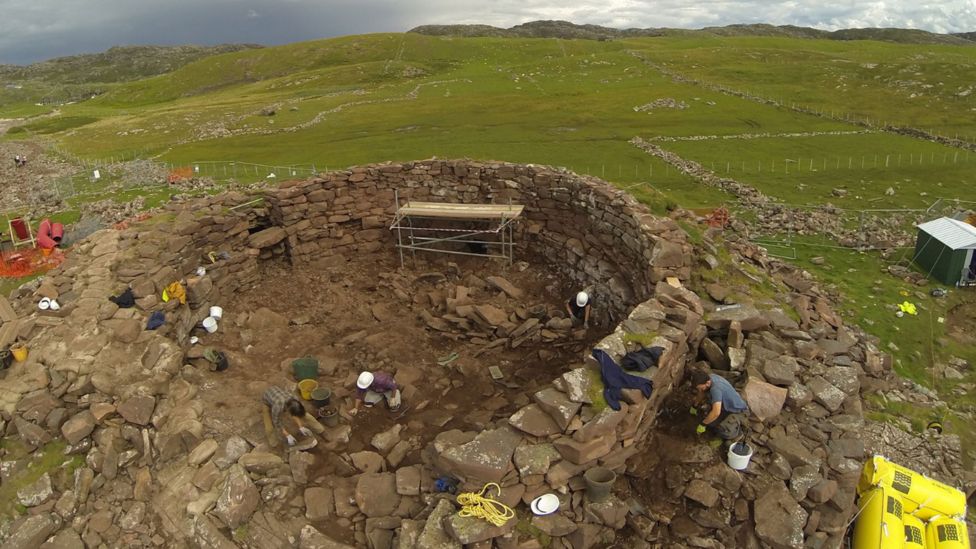
(AOC Archaeology)
An Iron Age home in the Highlands appears to have been hastily abandoned after a fire broke out either accidently or in an attack.
Archaeologists investigating the remains of the broch in Assynt, Sutherland, say they have found evidence to support the theory that the building caught fire and collapsed about 2,000 years ago.
Major excavation work is taking place at Clachtoll broch in Assynt. It is thought the stone roundhouse was abandoned between 150BC and 50AD.
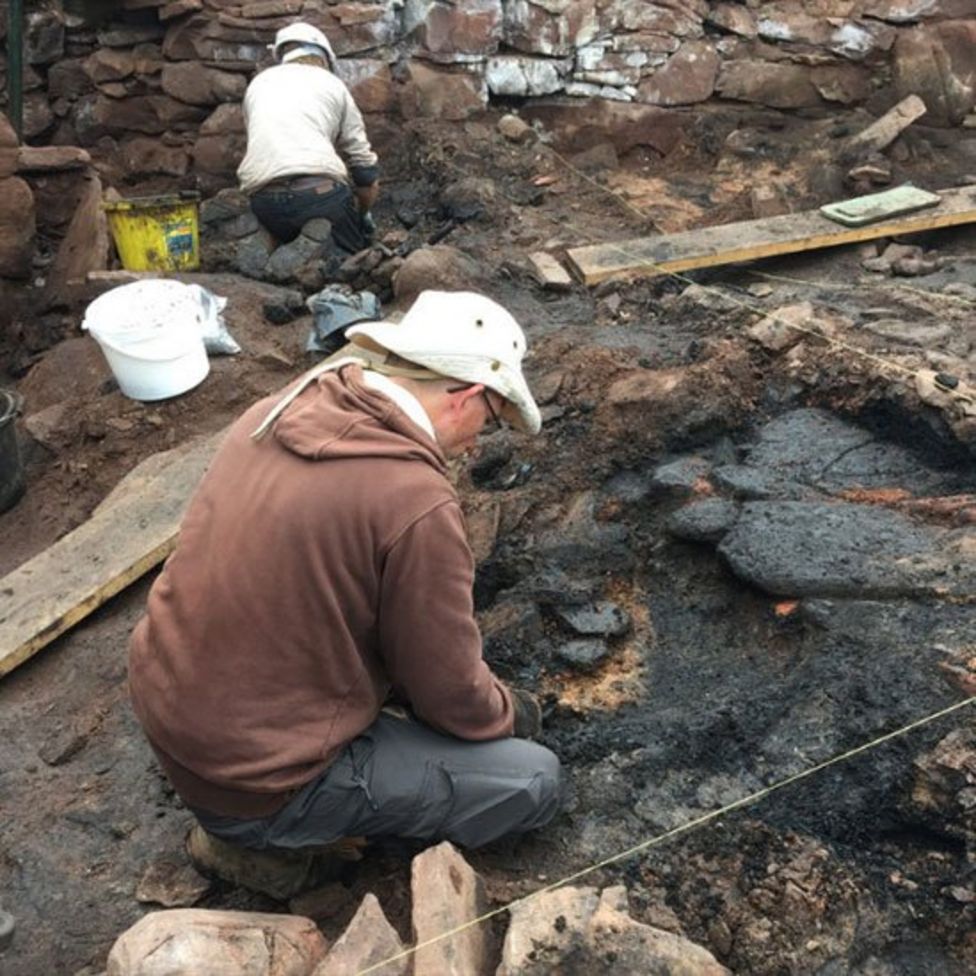
The project has reached layers showing evidence of a fire (AOC Archaeology)
The project, which is funded by Historic Environment Scotland and the Heritage Lottery Fund, is being led by AOC Archaeology.
The company's head of surveys, Graeme Cavers, said objects they have found so far suggest the broch was abandoned by its residents in a hurry.

He said the items were being found following the removal of rubble.
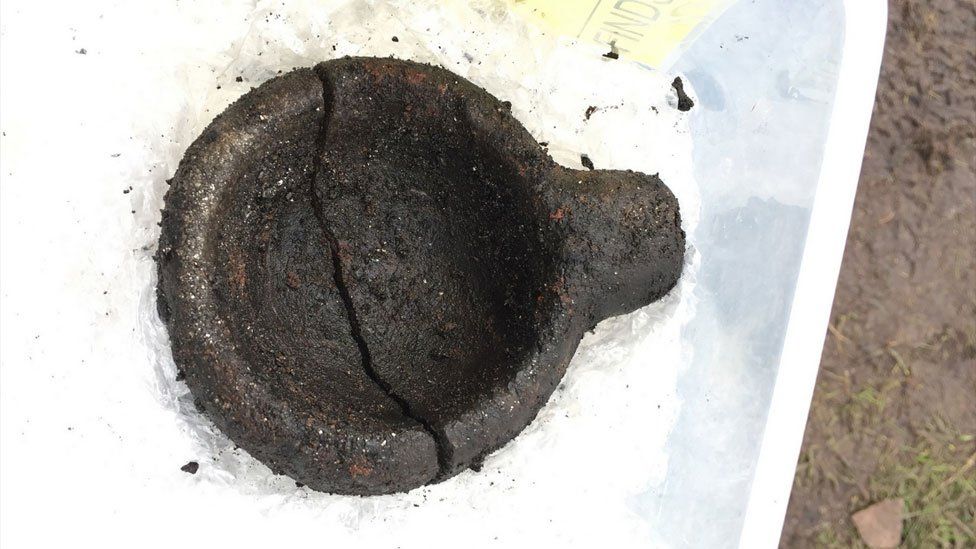
Archaeologists are finding objects such as a stone lamp and other pottery (AOC Archaeology)
"We are coming down on the archaeological layers, including the burning of the building," said Mr Cavers.
"We are pretty confident now that the broch has gone up in flames and that there was a major fire just shortly before it was abandoned.
"The fire could have been caused by an attack or caused by accidental burning of the building.
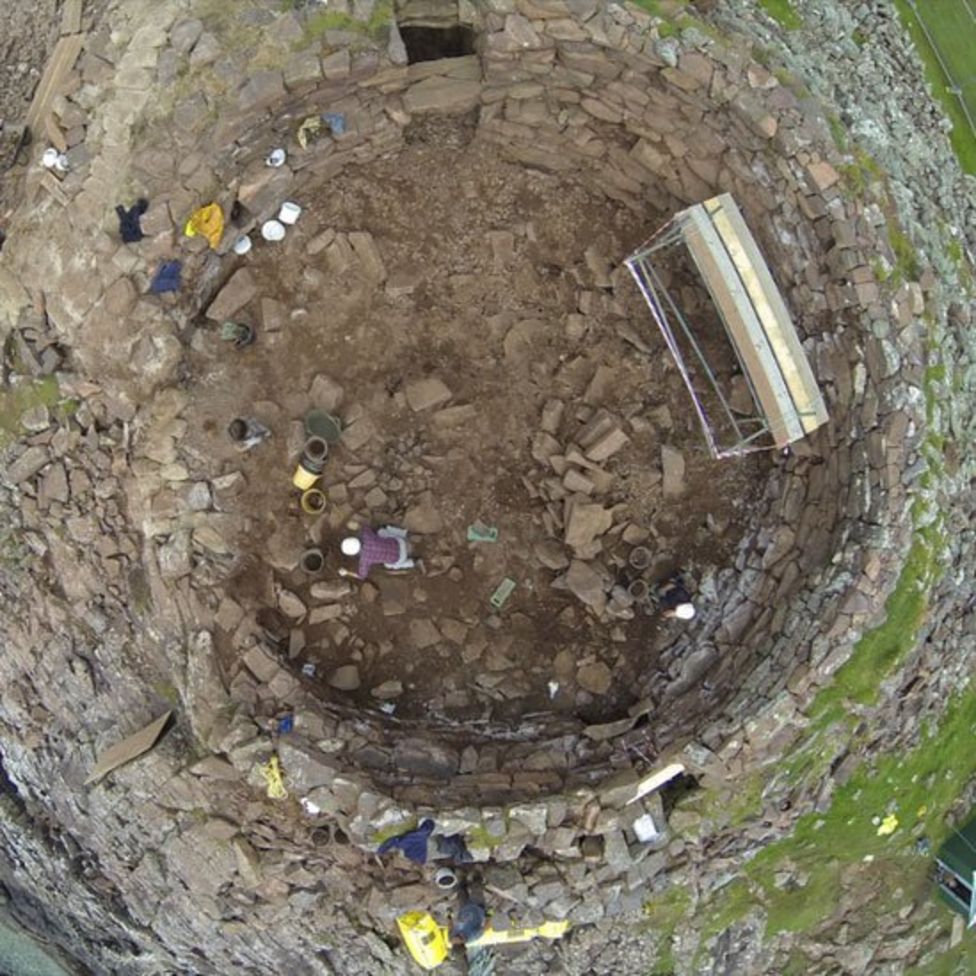
The broch is an Iron Age roundhouse (AOC Archaeology)
"We are finding lots of objects related to daily life."
These items include stone lamps and other pottery.
Mr Cavers added: "One of the objects that is interesting is a knocking stone which is for the preparation of grain before it is ground into flour.
"We have found that stone in a state that it is filled with burnt grain. So that looks like it was in use on the day that the building caught fire."
Excavations at the site are continuing.
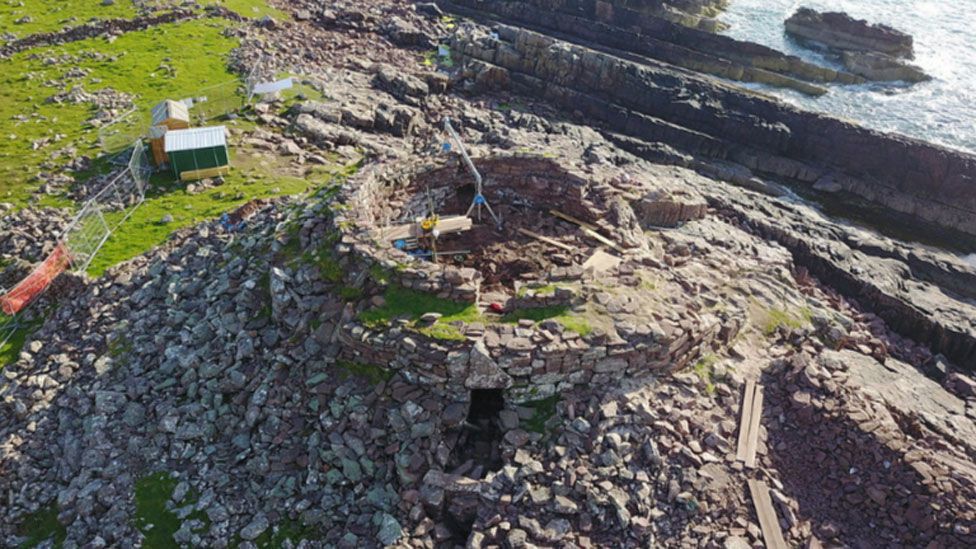
(Bob Cook)
All images are copyrighted.
Iron Age house in Assynt 'was burned down' - BBC News
Archaeologists investigating the remains of the broch in Assynt, Sutherland, say they have found evidence to support the theory that the building caught fire and collapsed about 2,000 years ago...
Iron Age house in Assynt 'was burned down'
By Andrew Thomson, BBC Scotland
29 August 2017

(AOC Archaeology)
An Iron Age home in the Highlands appears to have been hastily abandoned after a fire broke out either accidently or in an attack.
Archaeologists investigating the remains of the broch in Assynt, Sutherland, say they have found evidence to support the theory that the building caught fire and collapsed about 2,000 years ago.
Major excavation work is taking place at Clachtoll broch in Assynt. It is thought the stone roundhouse was abandoned between 150BC and 50AD.

The project has reached layers showing evidence of a fire (AOC Archaeology)
The project, which is funded by Historic Environment Scotland and the Heritage Lottery Fund, is being led by AOC Archaeology.
The company's head of surveys, Graeme Cavers, said objects they have found so far suggest the broch was abandoned by its residents in a hurry.

He said the items were being found following the removal of rubble.

Archaeologists are finding objects such as a stone lamp and other pottery (AOC Archaeology)
"We are coming down on the archaeological layers, including the burning of the building," said Mr Cavers.
"We are pretty confident now that the broch has gone up in flames and that there was a major fire just shortly before it was abandoned.
"The fire could have been caused by an attack or caused by accidental burning of the building.

The broch is an Iron Age roundhouse (AOC Archaeology)
"We are finding lots of objects related to daily life."
These items include stone lamps and other pottery.
Mr Cavers added: "One of the objects that is interesting is a knocking stone which is for the preparation of grain before it is ground into flour.
"We have found that stone in a state that it is filled with burnt grain. So that looks like it was in use on the day that the building caught fire."
Excavations at the site are continuing.

(Bob Cook)
All images are copyrighted.
Iron Age house in Assynt 'was burned down' - BBC News


